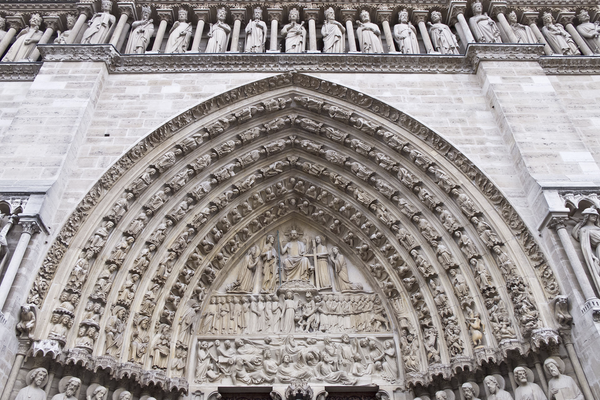The Notre-Dame Fire and Digital Preservation

The Notre-Dame fire was a tragedy. Millions mourned the fire’s impact by sharing their memories, posting images of time spent there. Others expressed regret at never visiting or over walking past her every day, taking the Cathedral’s presence for granted. This fire reminds us that even the most iconic representations of our history and culture are fragile. Our treasures can be gone in an instant.
Decades ago, the only way to experience a treasure lost to time might be through the types of photos and writings being shared this week. Today, we are far more fortunate. Through the power of technology, we are able to preserve our heritage – books and manuscripts, artworks, performances, architectural structures and sites – in remarkable ways. Some might argue that there is no substitute for visiting an historic site like Notre-Dame in person, but if you have not tried a virtual reality visit to a historical site, you should. We now have the capability to capture these places digitally and to experience and study them in deep, meaningful ways.
Years ago I had the opportunity to work with a professor of photogrammetry at the University of Cape Town, Dr. Heinz Ruther. Ruther spent thirty years traveling throughout Africa and around the world to capture UNESCO sites in painstaking detail. My role was to help bring those materials online for others to use as part of a larger initiative led by the non-profit Aluka, to make content from and about Africa accessible for research. The result of Ruther’s work and our collaboration is the ability for researchers to now virtually visit and navigate through many World Heritage sites like Kilwa, Tanzania and Lalibela, Ethiopia. Historians and others studying these sites have now accessed these digital site replicas millions of times. Some may be using them to supplement research trips to the actual site, but most will never travel there.
Technology is enabling access in ways unimaginable in the past, but it is also an essential tool in preservation. One does not have to dig very deep in the imagination to envisage situations where sites like these could be destroyed and these replicas become the only way to experience them. In fact, we worked with a consortium of private libraries, the Andrew W. Mellon Foundation, and Northwestern University to digitize Arabic manuscripts from Timbuktu, Mali. Years later, turmoil in the region brought the manuscripts, their whereabouts, and the comprehensiveness of the collection into question. While the outcome could have been far worse (many manuscripts survived), we were fortunate to have captured these manuscripts digitally to protect against their vanishing forever. This is not always, or even often, the case.
Amidst the sadness surrounding the Notre-Dame fire, I learned that Notre-Dame was captured by Vassar College art historian Andrew Tallon using 3-D imagery. The late Professor Tallon’s images could be used to help in the Cathedral’s restoration. Good news for sure, but I hope that rather than relief we feel a sense of urgency. We have the technology in hand to preserve what is most precious to our past. Our challenge is to make this a priority.